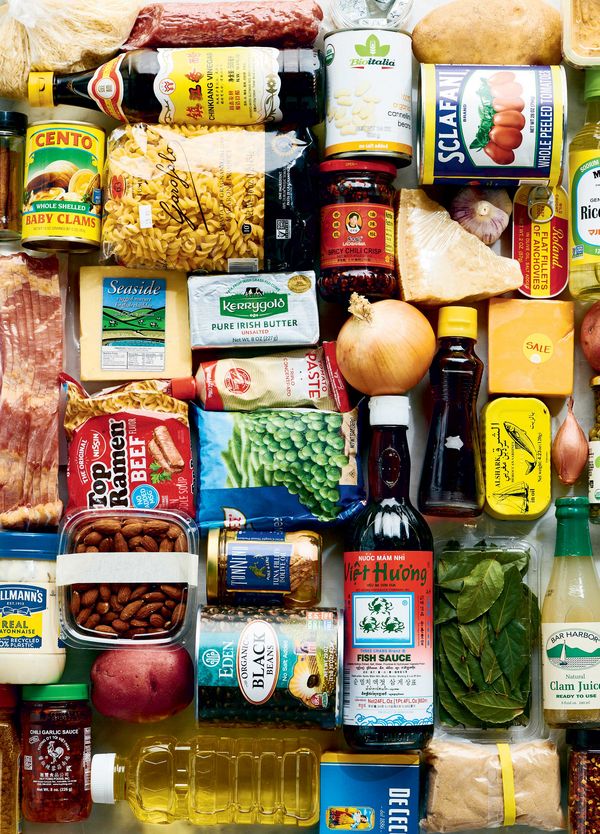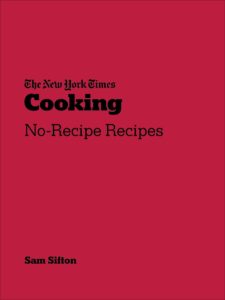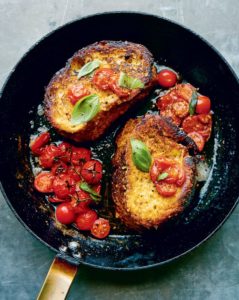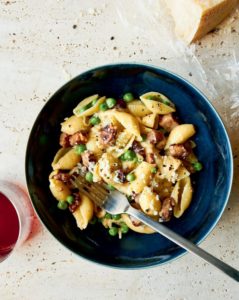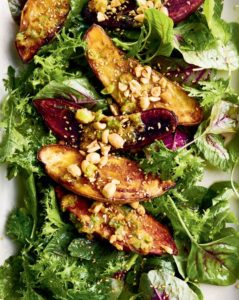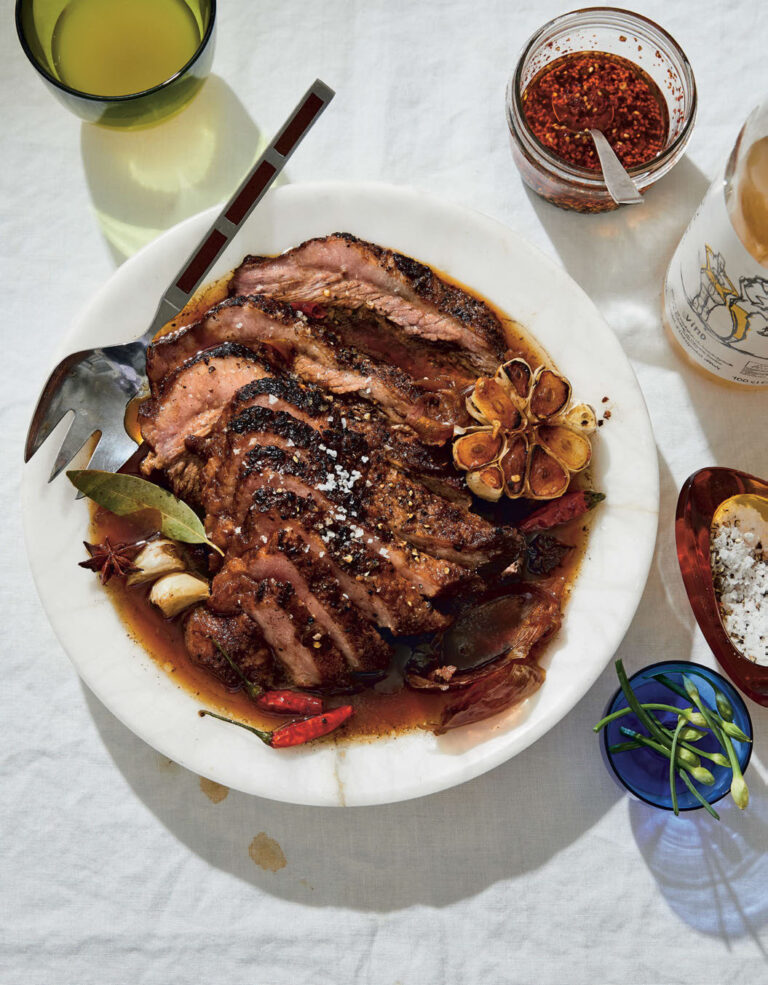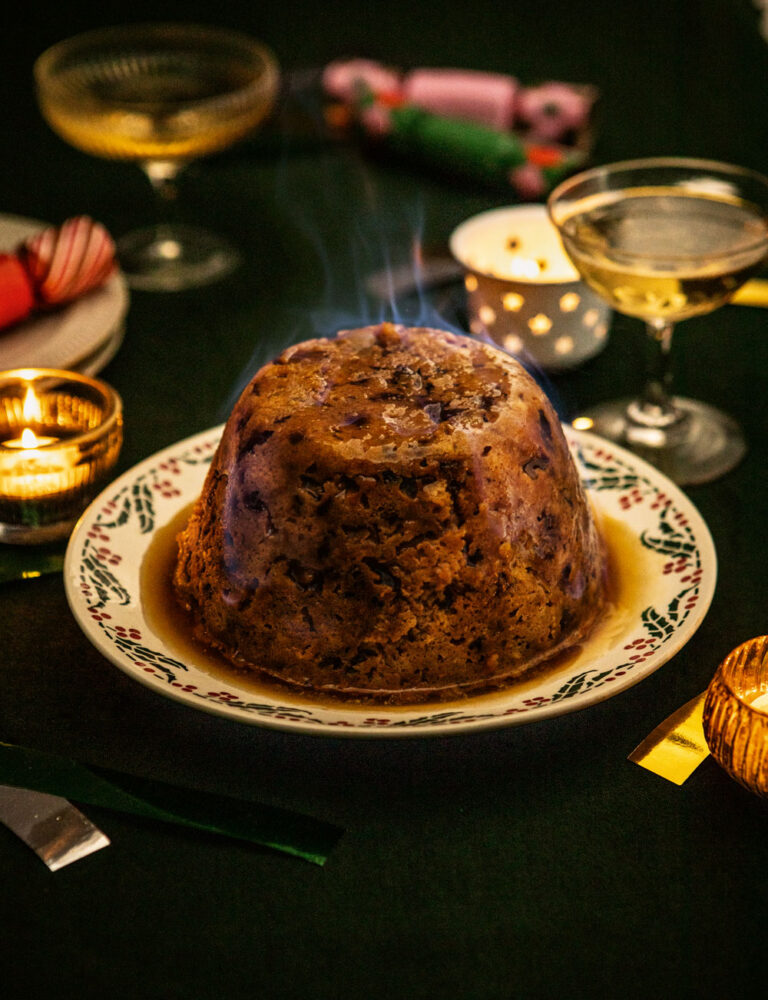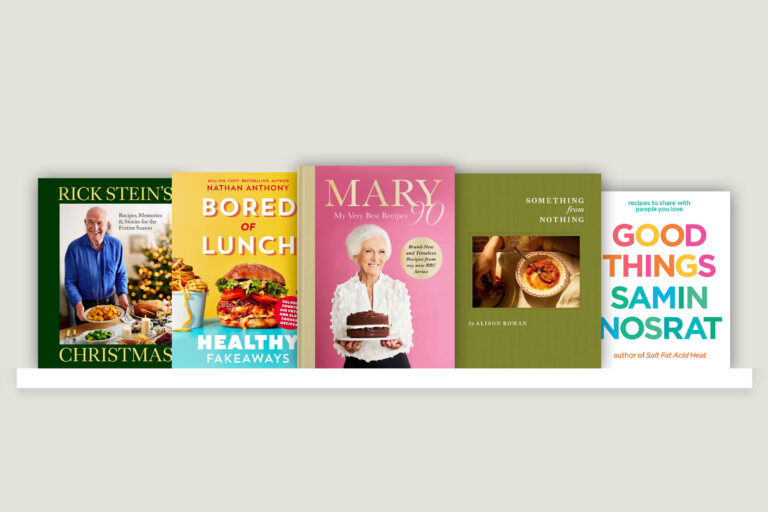The ability to improvise in the kitchen is often said to be the true marker of a talented cook, yet taking to the kitchen without the comfort of a recipe can feel like taking the training wheels off your first bike at the top of a steep hill, even for some of the most experienced of amateur chefs.
That’s where brand new cookbook, The New York Times Cooking: No-Recipe Recipes comes in. Written by NYT Cooking editor, Sam Sifton, this rule breaker of a book is here to show you that with a handful of good quality ingredients and the cook’s intuition you didn’t know you had, you really don’t need a recipe to produce great-tasting dishes competently and confidently. And just like learning to ride a bike, the more you practise, the better you become. In this extract from the book, Sam explains how no-recipe cooking all begins with a well-prepped pantry and shares his ultimate store cupboard essentials, from anchovies to tahini, to help you prepare your own kitchen stores for a more improvisational approach to cooking.
From the book
Buy From
“Here’s how I used to cook, before no-recipe recipes: I’d shop for every meal. I’d leave the office in the evening and stroll to the market to pick up the ingredients necessary to make whatever recipe I had chosen to make, and I’d use those ingredients to cook my meal.
This felt very Parisian, but really all I was doing was assembling meal kits. If I needed sesame oil, I’d buy a small bottle. If I needed garlic, I’d buy a small head. I’d buy two large potatoes for four people, and a little onion to go with them. My cabinets had some staples in them, but not many. I did not always have a tub of gochujang in the refrigerator, a jar of chili crisp, a container of oil-cured olives. I sometimes was without anchovies, without tahini, without roasted peanuts, without Parmesan. Often there were no eggs.
That is no longer the case, and it should not be the case for you, if you’d like to join me in cooking this new, improvisational way, without recipes. You do not need a recipe. But you must have staple supplies on hand with which to cook. What follows is a list of my most common kitchen companions. It’s just a start. You will add to the list as your tastes and interests dictate.
Alliums. Your cooking will benefit from always having onions and garlic, scallions most of the time, shallots sometimes, leeks occasionally, and chives once in a while.
Baking staples. No-recipe baking recipes fail fairly reliably; there’s science to baking, after all. But flour and cornstarch are important to have on hand for building savory sauces and dusting things you’re going to fry.
Beans. There’s no question that dried beans make for delicious bean pots, but for the purposes of no-recipe recipe making, I always have a few cans of black beans, white beans, red kidney beans, and some chickpeas as well. Any of these can be transformed into an excellent dinner, no recipe required.
Butter. I use a lot of butter in my cooking and hope that you will, too. It keeps forever in the fridge and even longer in the freezer. I prefer unsalted for cooking and desserts and salted for toast.
Canned fish. Anchovies play an important role in a lot of no-recipe recipes, and you can always make tuna salad if you have a can. I keep canned clams on hand as well, for pasta and pizza experiments. And if you’re really in a pinch, sardines are a pleasant meal, on crackers.
Cheese. You’ll see Parmesan in a lot of the suggestions for meals in this book. I like keeping blocks of Cheddar in the refrigerator and some of low-moisture mozzarella. Provolone is good to have. So is blue cheese. And feta. But if all you have is Parmesan, you’ll survive and happily, too.
Cured meats. Bacon is at the heart of a lot of my bean cooking, and diced salami in a tomato sauce is always a winner. You can use cured meats to flavor meatloaf, enhance salads, and build out sandwiches. Ham’s a secret weapon. You should always have cured meats in the refrigerator.
Dried fruit and nuts. Salad savers. Rice enhancers. A handful of roasted peanuts on your fried rice will take you far.
Eggs. There are very few no-recipe recipes that are not improved by adding an egg: fried, soft-boiled, scrambled, poached.
Oils. Olive oil, including extra virgin for finishing a dish. A neutral oil with a high smoke point, like canola. Sesame oil. All will come in handy as you cook.
Pasta. I keep a number of boxes of different shapes and sizes of pasta on hand—spaghetti and shells in particular—and I always have a tray of cheese ravioli in the freezer, just in case, and an accompanying package of the dumplings some call pot stickers. Egg noodles are a fine thing to have around as well, and always a few packets of instant ramen against the need for an emergency meal.
Rice. I like having plain long-grain white rice in the cupboard, along with Arborio rice for risotto, jasmine and basmati rice for their aroma and flavour, brown rice for kids home from college, and wild rice for those nights when nuttiness is required.
Stock. Maybe you’ll get to the point where you have ice-cube trays in the freezer filled with double-strength chicken stock, fish stock, veal stock. But in the meantime, laying in some bouillon paste or boxed stock is never in error.
Sugars. Brown sugar, honey, maple syrup, and molasses can punch up a spicy-salty sauce quite well.
Vegetables. It’s good to have a carrot when you decide you need one. Likewise potatoes and celery. A few bags of frozen peas will come in handy, as will frozen corn. Canned tomatoes are a godsend. So, too, is tomato paste.
And, now, for herbs, spices, and condiments. Here’s a list of what’s always in my house, representative of the kind of cooking I do, and that I’ve laid out in this book. Your list may end up looking very different. It’s just important that it’s a generous list. Herbs, spices, and condiments are at the very heart of no-recipe cooking.
Herbs and Spices. Bay leaves, black pepper, chili powder, cinnamon sticks, curry powder, dried rosemary, dried sage, dried thyme, furikake, ground cumin, kosher salt, red pepper flakes, smoked paprika.
Condiments. Capers, chili crisp, chutney, fish sauce, gochujang, hoisin sauce, hot sauce, ketchup, mayonnaise, miso, mustard, olives, oyster sauce, pickles—any and all fermented vegetables apply, rice wine, sour cream, soy sauce, sriracha, tahini, vinegars—red, black, balsamic, rice, Worcestershire sauce, yogurt.”
Now, that you’ve prepped your pantry, it’s time to start cooking the No-recipe Recipes way. Why not start out with store cupboard classic Pasta Puttanesa. Feeling pasta but looking for different flavours? How about this Pasta with Chickpeas and a Negroni. Looking for more of a centrepiece meal? How about Chicken with Caramlised Onions and Croutons or Smothered Pork Chops.
From the book
